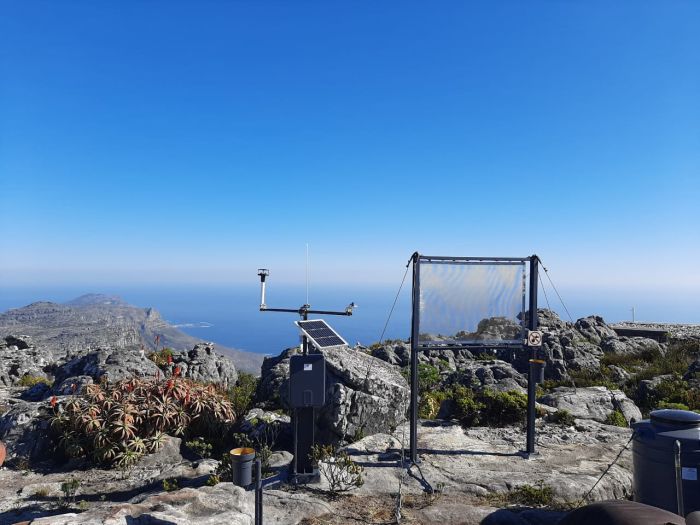


Southwestern South Africa had three consecutive dry winters—from 2015 through 2017—resulting in the Cape Town “Day Zero” drought of early 2018. Cape Town’s water crisis worsened to the point that there were competitions to see who could wash their shirts the least. Even restaurants and businesses encouraged patrons and employees to reduce wastewater. At this point, the city was just 90 days away from turning off the taps.
A year later, the South African city’s parched dams were more than 80% full. Water-use restrictions had been relaxed, and “Day Zero”—the point at which Cape Town’s municipal water supply would be shut off—never came to pass. More information about the aversion of this crisis can be found in thisWorld Economic Forum article.
Necessitated by the dry winters, the City of Cape Town instituted a project on Table Mountain to measure the potential of supplementing the area’s primary water supply via fog harvesting. While still in its infancy, the program’s creators hope to determine the feasibility of constructing multiple fog catchers on the mountain. The feasibility study and research phase are set to be completed by December 2022.
As of this case study's publish date, two Campbell Scientific weather stations have been installed on Table Mountain to measure basic weather parameters, as well as the fog collected. Both weather stations are equipped with 1.5 m² (16.2 ft²) screens specifically designed to capture or “harvest” the water from fog.
The City of Cape Town is testing various available material options for the screens. One screen is made from 40% shade cloth, while the other uses 316 stainless steel. As fog condensates on the surface of the screen, moisture accumulates on the surface and gathers in the gutter below. The droplets are fed through a tipping bucket rain gauge. Each drop is equivalent to 0.649 mL (0.022 oz) of water.
There are two predominant wind directions in Cape Town. In winter, the Northwester brings the rain from the cold Atlantic Ocean; in summer, the Southeaster blows off the Indian Ocean, typically forming a cloud that appears to hang on Table Mountain. The program creators hope this weather phenomenon will generate plenty of fog for harvesting.“The more we research and understand, the stronger and better prepared we become,”said Councillor Xanthea Limberg (Mayoral Committee Member for Water and Waste).
The first official studies concerning moisture density on Table Mountain were conducted over a century ago by German-born botanist Rudolf Marloth. Studies conducted since then have measured yearly fog precipitation at approximately 3,294 mm (129.7 in.), which is triple the average yearly rainfall recorded in Cape Town. The mountain’s famous “tablecloth”—scientifically referred to as an orographic cloud formation—is responsible for much of the high-altitude moisture and optimism surrounding the fog harvesting program.
Reviewing the data from the Campbell Scientific weather stations, it is interesting to note the sequence of events that create the potential for fog harvesting:
- In summer, the dry season, the wind typically picks up in the afternoon. It moves from the south and toward the southeast.
- As the wind accelerates, the temperature on Table Mountain drops significantly, and the relative humidity drastically increases.
- 当相对湿度达到100%时,太阳能我rradiance drops from 1,000 W/m² to less than 100 W/m².
- Minutes later, the first tips are recorded on the “fog gauge,” while the rain gauge records no precipitation. This indicates that fog is being collected rather than rainwater.